PRACTICE QUESTIONS(Matrix - Match) from RESNICK AND HALLIDAY PHYSICS Chapter 35 THE NUCLEUS for Class 12
| Class 12 | PHYSICS |
| Chapter | THE NUCLEUS |
| RESNICK AND HALLIDAY PHYSICS | PRACTICE QUESTIONS(Matrix - Match) |
| Medium | English |
| Academic Year | 2023-2024 |
Question 3
In each question, there is a table having 3 columns and 4 rows. Based on the table, there are 3 questions. Each question has 4 options a,b,c and d ONLY ONE of these four options is correct.
In the given table, Column I shows different types of nuclei, Column II shows their characteristics and Column III shows the example of different types of nuclei.
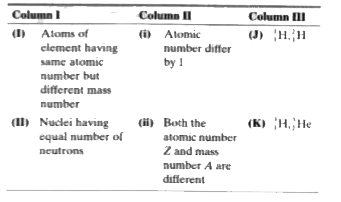
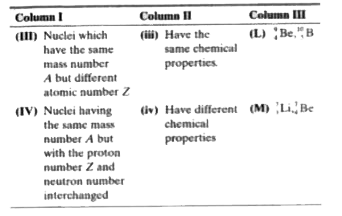
Determine the characteristics of isobars.View SolutionQuestion 4
In each question, there is a table having 3 columns and 4 rows. Based on the table, there are 3 questions. Each question has 4 options a,b,c and d ONLY ONE of these four options is correct.
In the given table, Column I shows different types of nuclei, Column II shows their characteristics and Column III shows the example of different types of nuclei.
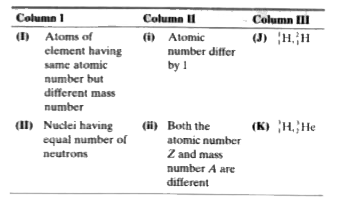
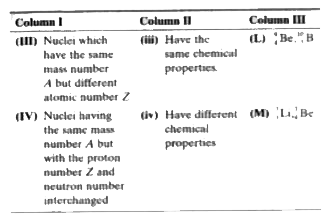
Determine the characteristics of mirror nuclei.View SolutionQuestion 5
In each question, there is a table having 3 columns and 4 rows. Based on the table, there are 3 questions. Each question has 4 options a,b,c and d ONLY ONE of these four options is correct.
In the given table, Column I shows different types of nuclei, Column II shows their characteristics and Column III shows the example of different types of nuclei.
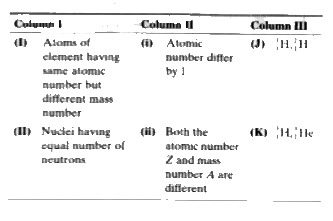
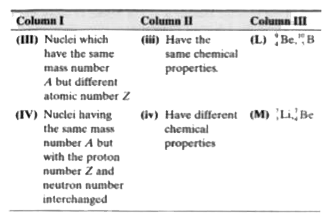
Determine the characteristics of isotones.View SolutionQuestion 6
In the given table, column I shows the different types of decays in nuclear fission, collumn II show the change in the element which undergoes decay and Column III shows properties of different types of decays.
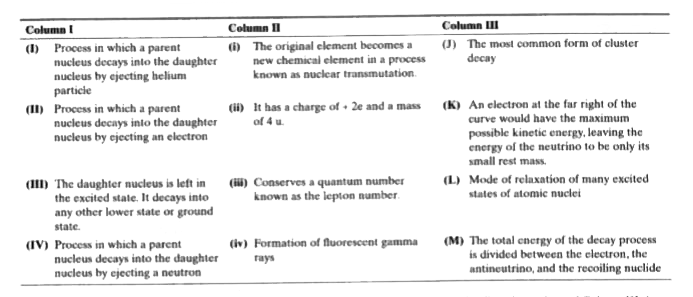
What are the characteristics of the below nuclear equation?
AZX(mother nucleus) →A−4Z−2Y(daughter nucleus) +42He View SolutionQuestion 7
In the given table, column I shows the different types of decays in nuclear fission, collumn II show the change in the element which undergoes decay and Column III shows properties of different types of decays.
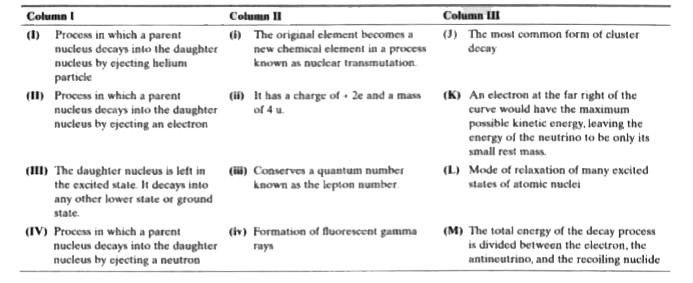
What are the characteristics of the below nuclear equation?
AzX (mother nucleus) AZ+1Y (daughter nucleus)+0−1eView SolutionQuestion 8
In the given table, column I shows the different types of decays in nuclear fission, collumn II show the change in the element which undergoes decay and Column III shows properties of different types of decays.
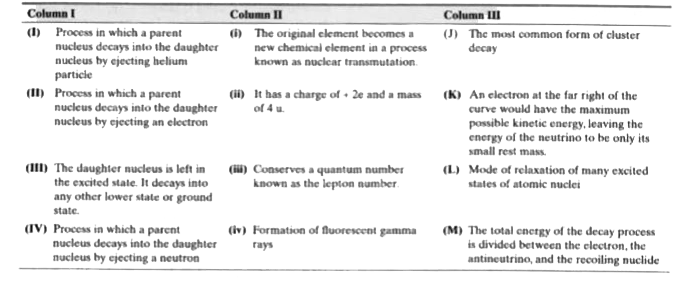
What are the characteristics of the below nuclear equation?
AZX⋅ (mother nucleus)→AZY (daughter nucleus ) +hf View SolutionQuestion 9
There are different types of radioactive series that radioactivie decay follows. In the given table, Column I shows the end or stable nuclei which any one of the radioactive series produces, Column II shows the mass number of different tpes of ratioactive series and Column III shows different values of n different radioactive sereis.
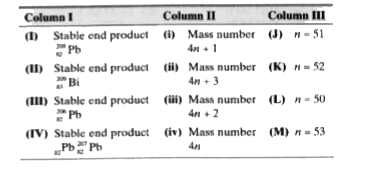
Determine the characteristics of thorium.View SolutionQuestion 10
There are different types of radioactive series that radioactivie decay follows. In the given table, Column I shows the end or stable nuclei which any one of the radioactive series produces, Column II shows the mass number of different tpes of ratioactive series and Column III shows different values of n different radioactive sereis.
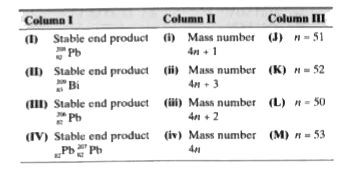
Determine the characteristics of neptunium.View SolutionQuestion 11
There are different types of radioactive series that radioactivie decay follows. In the given table, Column I shows the end or stable nuclei which any one of the radioactive series produces, Column II shows the mass number of different tpes of ratioactive series and Column III shows different values of n different radioactive sereis.
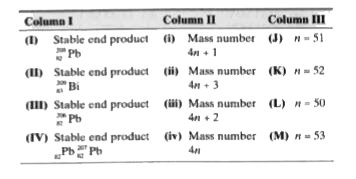
Determine the characteristics of actinium.View SolutionQuestion 12
Many side particles are produced when radioactive decay takes place.In the given table, Column I shows the charge of the different side particles, Column II shows the mass and Column III shows the ionization power of these side particles.
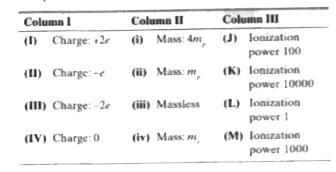
What are the characteristics of α- particle?View SolutionQuestion 13
Many side particles are produced when radioactive decay takes place.In the given table, Column I shows the charge of the different side particles, Column II shows the mass and Column III shows the ionization power of these side particles.
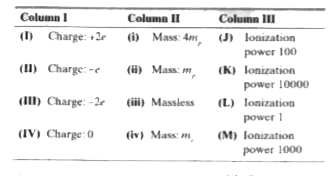
What the characteristics of β- particle?View SolutionQuestion 14
Many side particles are produced when radioactive decay takes place.In the given table, Column I shows the charge of the different side particles, Column II shows the mass and Column III shows the ionization power of these side particles.
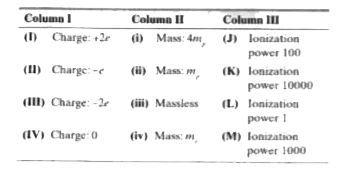
What the characteristics of gamma - particles?View Solution

